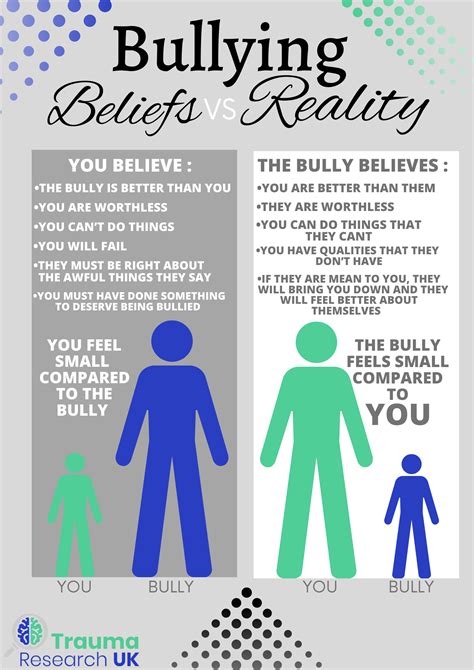
Older adults are sharing the often-surprising and sometimes heartbreaking reasons they were bullied as children, revealing that the experiences went far beyond the typical playground taunts and touched on socioeconomic status, physical appearance, family dynamics, and perceived differences. Online forums are providing a space for these individuals to recount their experiences, shedding light on the diverse and often painful realities of childhood bullying.
Bullying, often remembered as a schoolyard problem, has left lasting scars on many older adults who are now reflecting on the root causes of their torment. While popular culture often depicts bullying as a straightforward case of stronger kids picking on weaker ones, the recollections shared online reveal a much more complex picture. Individuals are coming forward to disclose that they were targeted due to circumstances beyond their control, from their families’ financial situations to their unique physical characteristics.
“I was bullied for being poor,” one person shared, according to the reports collated online. This confession underscores a common theme: socioeconomic status played a significant role in who became a target. Children from low-income families, often distinguishable by their clothes, lack of resources, or reliance on free lunch programs, were frequently singled out by their peers. The stigma associated with poverty created a social hierarchy within schools, where those with less were seen as inferior.
Another prevalent reason for bullying was physical appearance. Many older adults recounted being harassed for their weight, height, skin color, or perceived attractiveness. One person noted, “I was constantly called ‘fatso’,” highlighting the cruelty directed at those who didn’t conform to conventional beauty standards. These experiences often led to long-term body image issues and a deep sense of insecurity that persisted into adulthood.
Family dynamics also emerged as a significant factor. Children from unconventional families, such as those with divorced parents, single parents, or parents with mental health issues, were often stigmatized and bullied. “My parents’ divorce made me a target,” one person explained, reflecting the societal judgment and lack of understanding that often accompanied such situations. The children of parents who were seen as different, whether due to their profession, beliefs, or lifestyle, were also susceptible to bullying.
Perceived differences, whether real or imagined, also made children vulnerable. This included everything from academic performance to hobbies and interests. Those who excelled in school were sometimes labeled as “nerds” or “teacher’s pets” and subjected to ridicule. Conversely, those who struggled academically were often seen as less intelligent and therefore deserving of scorn. Children with unusual hobbies or interests, such as collecting insects or playing unconventional musical instruments, were also targets.
The long-term effects of bullying can be devastating. Many older adults who were bullied as children report experiencing anxiety, depression, low self-esteem, and difficulty forming relationships. The emotional wounds inflicted during childhood can linger for decades, shaping their sense of self and their interactions with others.
The recent surge in online sharing of these experiences has sparked a broader conversation about the complexities of bullying and the need for greater empathy and understanding. By sharing their stories, older adults are not only healing their own wounds but also helping to raise awareness about the diverse reasons why children become targets and the lasting impact of these experiences. This increased awareness can help to create a more supportive and inclusive environment for children today, reducing the prevalence and severity of bullying.
Many who have shared their stories emphasize the importance of early intervention and education. Schools need to implement comprehensive anti-bullying programs that address not only physical aggression but also verbal and emotional abuse. These programs should also focus on promoting empathy, respect, and understanding of diversity. Parents also have a crucial role to play in teaching their children about the importance of kindness, compassion, and acceptance.
Ultimately, the goal is to create a society where all children feel safe, valued, and respected, regardless of their background, appearance, or differences. By acknowledging the diverse reasons why children are bullied and addressing the root causes of this behavior, it is possible to create a more just and equitable world for future generations.
In-Depth Analysis of Bullying Among Older Adults
The recent outpouring of “Boomer Confessions” regarding childhood bullying experiences reveals a nuanced understanding of the phenomenon, extending far beyond the simplistic notions often associated with schoolyard aggression. It underscores that bullying is not merely a random act of aggression but a complex social dynamic deeply rooted in societal prejudices, economic disparities, and cultural norms.
Socioeconomic Disparities as a Bullying Catalyst: The revelation that many older adults were bullied for being poor sheds light on the often-overlooked role of socioeconomic status in shaping childhood experiences. In societies characterized by economic inequality, children from low-income families are often stigmatized and marginalized. They may lack access to the same resources as their wealthier peers, such as fashionable clothing, extracurricular activities, and educational opportunities. This can lead to feelings of shame, isolation, and inadequacy, making them vulnerable to bullying.
The bullying of children from low-income families is often manifested in subtle but damaging ways. They may be excluded from social activities, ridiculed for their clothing or possessions, or subjected to derogatory remarks about their families. In some cases, they may even be physically assaulted or robbed of their belongings. The cumulative effect of these experiences can be devastating, leading to chronic stress, anxiety, depression, and academic underachievement.
Physical Appearance and Conformity Pressures: The confessions also highlight the pervasive influence of beauty standards and conformity pressures in shaping childhood bullying experiences. Children who deviate from conventional beauty standards, whether due to their weight, height, skin color, or physical features, are often targeted for ridicule and harassment. This is particularly true for girls, who are often subjected to intense scrutiny and pressure to conform to unrealistic beauty ideals.
The bullying of children based on their physical appearance can have long-lasting psychological effects. It can lead to body image issues, low self-esteem, social anxiety, and eating disorders. Some victims may even resort to extreme measures, such as dieting, cosmetic surgery, or self-harm, in an attempt to alleviate their distress.
Family Dynamics and Social Stigma: The disclosure that children from unconventional families were often bullied underscores the role of social stigma in perpetuating bullying behavior. Children from divorced families, single-parent households, or families with mental health issues may be stigmatized and ostracized by their peers. This is often due to a lack of understanding and empathy, as well as societal prejudices against non-traditional family structures.
The bullying of children from unconventional families can be particularly damaging because it attacks their sense of belonging and identity. They may feel ashamed of their family situation and isolated from their peers. In some cases, they may even internalize the negative stereotypes associated with their family, leading to feelings of self-loathing and worthlessness.
Perceived Differences and the Desire for Conformity: The experiences shared also reveal the impact of perceived differences, such as academic performance, hobbies, and interests, on bullying dynamics. Children who excel academically or pursue unconventional hobbies may be seen as “different” and therefore vulnerable to bullying. This is often driven by a desire for conformity and a fear of those who deviate from the norm.
The bullying of children based on their perceived differences can stifle their creativity, curiosity, and intellectual development. They may be afraid to express their true selves or pursue their passions for fear of ridicule and rejection. This can lead to a sense of emptiness and unfulfillment, as well as a loss of potential.
Long-Term Psychological Consequences: The long-term psychological consequences of childhood bullying can be profound and far-reaching. Many older adults who were bullied as children continue to struggle with anxiety, depression, low self-esteem, and difficulty forming relationships. The emotional wounds inflicted during childhood can linger for decades, shaping their sense of self and their interactions with others.
Bullying can also lead to post-traumatic stress disorder (PTSD), a mental health condition characterized by flashbacks, nightmares, and intrusive thoughts related to the traumatic event. Individuals with PTSD may also experience heightened anxiety, irritability, and difficulty concentrating.
Addressing Bullying: A Multifaceted Approach: Addressing bullying requires a multifaceted approach that involves schools, families, and communities. Schools need to implement comprehensive anti-bullying programs that address not only physical aggression but also verbal and emotional abuse. These programs should also focus on promoting empathy, respect, and understanding of diversity.
Parents also have a crucial role to play in teaching their children about the importance of kindness, compassion, and acceptance. They should model positive behavior, encourage their children to stand up for others, and provide them with the support and resources they need to cope with bullying.
Communities can also play a role in preventing bullying by creating a culture of inclusivity and respect. This can be achieved through community events, educational programs, and public awareness campaigns. By working together, schools, families, and communities can create a safer and more supportive environment for all children.
The sharing of “Boomer Confessions” about childhood bullying experiences provides valuable insights into the complexities of this pervasive social problem. It underscores the need for a more nuanced understanding of bullying and a more comprehensive approach to prevention and intervention. By acknowledging the diverse reasons why children are bullied and addressing the root causes of this behavior, we can create a more just and equitable world for future generations.
The Role of Societal Norms and Values: The prevalence of bullying is often influenced by the prevailing societal norms and values. In societies that prioritize competition, aggression, and conformity, bullying is more likely to thrive. Conversely, in societies that value cooperation, empathy, and diversity, bullying is less likely to occur.
The Impact of Technology and Social Media: The rise of technology and social media has added a new dimension to the problem of bullying. Cyberbullying, which involves the use of electronic communication to harass or intimidate others, has become increasingly prevalent in recent years. Cyberbullying can be particularly damaging because it can occur 24/7 and reach a wide audience.
The Importance of Early Intervention: Early intervention is crucial in addressing bullying. Children who are bullied should be provided with support and resources to help them cope with the experience. Bullies should also be held accountable for their actions and provided with opportunities to learn more positive behaviors.
The Need for Ongoing Research: Ongoing research is needed to better understand the causes and consequences of bullying and to develop more effective prevention and intervention strategies. This research should focus on identifying risk factors for bullying, evaluating the effectiveness of anti-bullying programs, and developing interventions to address the long-term psychological effects of bullying.
The Power of Storytelling: The sharing of personal stories about bullying can be a powerful tool for raising awareness and promoting empathy. By hearing the experiences of others, we can gain a deeper understanding of the impact of bullying and the importance of creating a more supportive and inclusive society.
The Legal and Policy Framework: Many countries and states have enacted laws and policies to address bullying. These laws and policies typically define bullying, prohibit bullying behavior, and require schools to implement anti-bullying programs.
The Role of Bystanders: Bystanders, or individuals who witness bullying, can play a crucial role in preventing it. Bystanders who intervene in bullying situations can help to protect the victim and send a message that bullying is not acceptable.
The Connection to Other Forms of Violence: Bullying is often linked to other forms of violence, such as domestic violence, school shootings, and hate crimes. By addressing bullying, we can also help to prevent these other forms of violence.
The Global Perspective: Bullying is a global problem that affects children in all countries and cultures. While the specific forms of bullying may vary across cultures, the underlying dynamics are often the same.
Creating a Culture of Respect: Ultimately, the goal is to create a culture of respect where all individuals feel safe, valued, and respected. This requires a concerted effort from schools, families, communities, and governments. By working together, we can create a world where bullying is no longer tolerated.
The significance of understanding intergenerational trauma: Many boomers faced unique challenges during their formative years, including societal upheaval and economic instability. These experiences may have contributed to a culture where bullying was more prevalent or less effectively addressed. Recognizing the historical context can provide a deeper understanding of the phenomenon and inform more effective interventions.
Mental Health Support: It is crucial to provide mental health support for individuals who have experienced bullying, both in the past and present. Therapy, counseling, and support groups can help victims process their trauma, develop coping mechanisms, and build resilience.
Social Skills Training: For individuals who engage in bullying behavior, social skills training can help them learn more positive ways to interact with others. This training can focus on developing empathy, communication skills, and conflict-resolution strategies.
Parental Involvement: Parental involvement is essential in preventing and addressing bullying. Parents should talk to their children about bullying, teach them how to be good bystanders, and work with schools to create a safe and supportive environment.
Community Awareness Campaigns: Community awareness campaigns can help to educate the public about bullying and promote a culture of respect. These campaigns can use various media, such as television, radio, social media, and print, to reach a wide audience.
The Role of Empathy: Empathy is a critical component of preventing bullying. By teaching children to understand and share the feelings of others, we can help them develop a sense of compassion and reduce the likelihood that they will engage in bullying behavior.
Promoting Inclusion and Diversity: Creating inclusive and diverse environments can help to reduce bullying. When individuals feel accepted and valued for who they are, they are less likely to be targeted for bullying.
Challenging Stereotypes: Challenging stereotypes is essential in preventing bullying. Stereotypes can lead to prejudice and discrimination, which can create a climate where bullying is more likely to occur.
Empowering Victims: Empowering victims of bullying is crucial. Victims should be encouraged to speak out about their experiences and provided with the support and resources they need to cope with the trauma.
Holding Bullies Accountable: Holding bullies accountable for their actions is essential. Bullies should face consequences for their behavior, such as suspension from school or community service.
Frequently Asked Questions (FAQ)
-
What were the most common reasons older adults reported being bullied as children?
According to shared accounts, common reasons include socioeconomic status (“being poor”), physical appearance (weight, height, skin color), family dynamics (divorced parents, single parents), and perceived differences (academic performance, hobbies). As one person shared, “I was bullied for being poor,” highlighting the deep impact of socioeconomic disparities.
-
What are some of the long-term psychological effects of childhood bullying reported by older adults?
Many older adults report experiencing anxiety, depression, low self-esteem, difficulty forming relationships, and even post-traumatic stress disorder (PTSD) as a result of childhood bullying. These experiences often shaped their sense of self and their interactions with others for decades.
-
What role does socioeconomic status play in childhood bullying, according to these confessions?
Socioeconomic status can significantly contribute to bullying, with children from low-income families often targeted due to their lack of resources, clothing, or participation in free lunch programs. This creates a social hierarchy where those with less are seen as inferior and are vulnerable to ridicule and exclusion.
-
What are some strategies that schools and communities can implement to address and prevent bullying, based on these shared experiences?
Schools should implement comprehensive anti-bullying programs that address physical, verbal, and emotional abuse, focusing on promoting empathy, respect, and understanding of diversity. Parents should teach their children about kindness, compassion, and acceptance. Communities can create inclusive cultures through events, educational programs, and public awareness campaigns. Early intervention and mental health support are also crucial.
-
How has the rise of technology and social media impacted bullying, and what is cyberbullying’s significance?
The rise of technology has added cyberbullying to the landscape, which involves using electronic communication to harass or intimidate others. Cyberbullying is particularly damaging because it can occur 24/7 and reach a wide audience, exacerbating the impact on victims and requiring specific prevention and intervention strategies.









